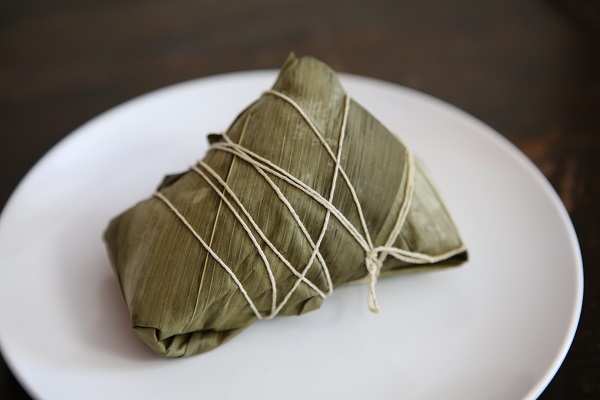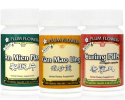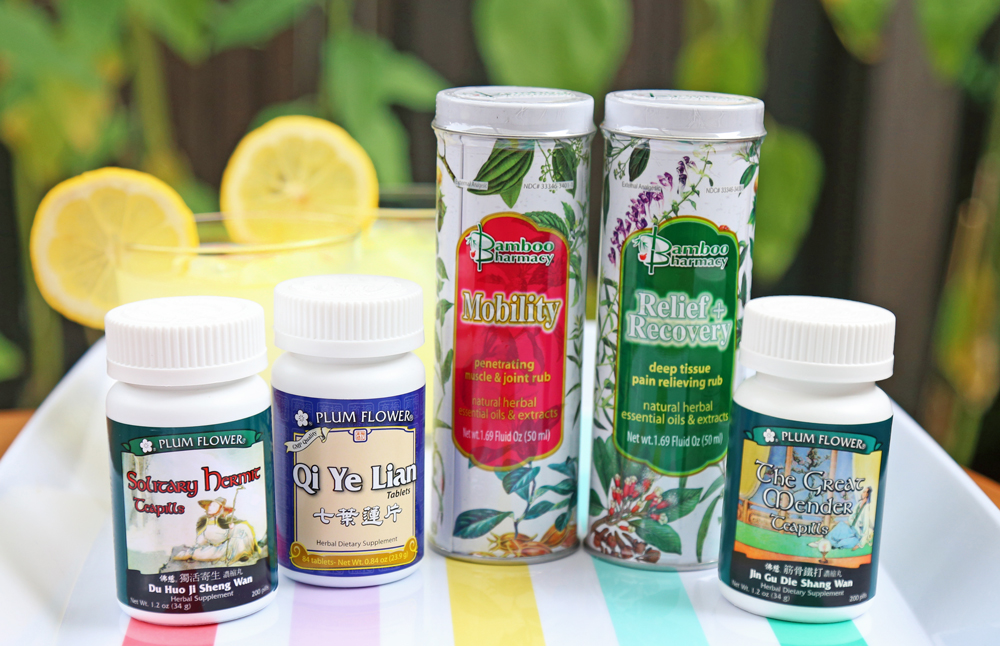TCM Lifestyle

The winter solstice or Dōngzhì 冬至 holds great importance in both Chinese culture and Chinese Medicine. Dongzhi literally means 'Winter's Arrival'. It is usually celebrated on December 20th or 21st, when the day is the shortest and the night the longest in the northern hemisphere, a fact known since 2500 BCE when the first sundials were used in China. The winter solstice is commonly known as the "Winter Festival" and “Festival of Extreme length” (as the sun’s extreme position lengthens shadows), and since ancient times was regarded as a major festival on par with the lunar New Year.
Read MoreThe Water Element in TCM
Lauren Coffelt

Winter’s stillness invites us to turn inward, reflect, and restore. In Traditional Chinese Medicine, this season is governed by the Water element, symbolizing adaptability, introspection, and unseen potential. Join us as we explore how Water teaches resilience and balance, its connection to the Kidneys and Bladder, and tips for aligning with the season’s natural rhythm.
Read MoreThoughts, observations and the classical Chinese medicine view: The first trimester of pregnancy
Raven Lang, L.Ac., O.M.D.

The classic writings I quote are taken from the Zhubing Yuanhuo Lun, the Mawangdui, and Sun Si Miao. They will offer you the ability to contemplate the first three of the ten lunar months of pregnancy, interpreted and practiced by the leading physicians of that time. In studying the ancients on their thoughts regarding pregnancy, we must realize that these teachings came from the astute observations and witnessing of nature in all its glory and violence. The lessons the ancients learned originated from watching the power and influence of the moon, sun and stars, the weather, seasons, elements, the sowing, cultivating, and harvesting of crops, the language of plants and animals, and bottom line, the interdependence of all these factors as they affect everything on earth.
Read MoreThe Chinese Herb Garden
Dr. Jasmine Rose Oberste, DACM

Many of us are drawn to study and practice Chinese medicine in part due to the wisdom held by such quiet observation and an intuitive understanding that it is a more sustainable way of healing and being. However, when we are in school with hundreds of new herbs to learn: taste, temperatures, actions and combinations, we are often disconnected from the source of those herbs, many of which grow around us every day. Read more about growing Chinese herbs in the US, where to find Chinese herb gardens, and references for sourcing your own seeds.
Read MoreUnderstanding How Qi Gong Promotes Health
Skye Sturgeon, DAOM, Quality Assurance Manager, Mayway
 Breathe your way to harmony, balance, health, and well-being. Practicing Qi Gong yourself and teaching it to your patients is one of the most beneficial aspects of Chinese medicine. It can be engaged anywhere and by anyone, including those who are bed-ridden or in a wheelchair. In Qi Gong breathing, the action is focused on the exhale by intentionally contracting the diaphragm and abdominal wall muscles, squeezing out the carbon dioxide until the lungs are empty.
Breathe your way to harmony, balance, health, and well-being. Practicing Qi Gong yourself and teaching it to your patients is one of the most beneficial aspects of Chinese medicine. It can be engaged anywhere and by anyone, including those who are bed-ridden or in a wheelchair. In Qi Gong breathing, the action is focused on the exhale by intentionally contracting the diaphragm and abdominal wall muscles, squeezing out the carbon dioxide until the lungs are empty.
Navigating Holiday Eating - Healing the Yi Spirit
Dr. Kim Peirano, DACM, L.Ac.
 Self-healing principles are about making small changes consistently, keeping promises we make for ourselves, learning to set clear boundaries, and healing our relationship with food. The key here is small bites - these aren’t promises like hitting the gym every day; it’s small promises like making the bed every day and something we can surely follow through on. The act of doing it helps to rewire the brain and invite the Yi back to the center again because we are no longer denying our own needs.
Self-healing principles are about making small changes consistently, keeping promises we make for ourselves, learning to set clear boundaries, and healing our relationship with food. The key here is small bites - these aren’t promises like hitting the gym every day; it’s small promises like making the bed every day and something we can surely follow through on. The act of doing it helps to rewire the brain and invite the Yi back to the center again because we are no longer denying our own needs.
 Zongzi are a traditional food during the Dragon Boat Festival. The story behind these dumplings started over a thousand years ago during the Warring States period, when there were seven kingdoms in China who were constantly battling for dominance.
Zongzi are a traditional food during the Dragon Boat Festival. The story behind these dumplings started over a thousand years ago during the Warring States period, when there were seven kingdoms in China who were constantly battling for dominance.
Chinese Herb Egg Dyeing
Dana Yates

We tested 11 Plum Flower Chinese herbs to see if they could produce rich colors for egg dyeing. Check out our short video for results!
Read MoreLín 臨 / Approach of Spring 19 I Ching
Skye Sturgeon, DAOM, Quality Assurance Manager, Mayway

The hexagram Lín 臨 corresponds to the twelfth month of the lunar calendar which is usually found in January or early February. The character Lín 臨 is translated as “coming just before” or “just about to occur” and in most translations of the I Ching, it is rendered as “Approach”. Since this is written in February and the solar calendar places Spring several weeks hence, I see this as “The Approach of Spring”. The hexagram consists of the three broken lines representing Earth above the trigram for Lake. The two yang lines of Lake are rising into and beginning to nourish the Earth, a powerful image for the approach of Spring.
Read MoreJiě/ Relief 解 Spring I Ching
Skye Sturgeon, DAOM, Quality Assurance Manager, Mayway

The hexagram associated with the fourth month of the Chinese lunar calendar or May on the solar/Gregorian calendar is Jiě 解/ Deliverance or Relief (#40). In the sequence of the gua, Jiě 解 follows Jiān 艱/ Difficulty or Hardship because things cannot remain in hardship without end. Many of us have been ill, many have lost friends or family, and nearly all of us have been frightened. Certainly, the isolation has engendered anxiety, depression, or feelings of loneliness. The I Ching promises Deliverance or Relief from these conditions.
Read MoreWomen's Voices in Traditional Chinese Medicine
Laura Stropes, L.Ac.

We are celebrating women's health and the fabulous contributions that women are making in traditional Chinese medicine! Check out our interviews with Yvonne Charles of Charlotte Maxwell Clinic, Valerie Hobbs, L.Ac., specializing in women's health and former midwife, Susan Johnson, L.Ac., respected author and instructor of Master Tung's points, Sally Rappeport, L.Ac., acupuncturist and co-founder of the Shen Nong Society, and Ravyn Stanfield, Executive Director of Acupuncturists Without Borders.
Read MoreLunaception: How the Moon, Light & Dark Affect Fertility
Laura Stropes, L.Ac.
 Find out why a dark room and a light bulb could be keys to conceiving, and how to balance Yin and Yang by cycling in harmony with the moon. The term “lunaception” was originally coined by Louise Lacey, whose goal was to use the connection between female hormones and the phases of the moon as a method of birth control.
Find out why a dark room and a light bulb could be keys to conceiving, and how to balance Yin and Yang by cycling in harmony with the moon. The term “lunaception” was originally coined by Louise Lacey, whose goal was to use the connection between female hormones and the phases of the moon as a method of birth control.
Essential Travel Formulas
Mark Frost, MSTCM, L.Ac.
 No matter your type or time of travel, the family First-Aid kit is an essential item. Though the standard First-aid kit contains the usual emergency care items, traditional Chinese medicine has its own special list of medicines to address common health issues that can come up during many adventures. Over the decades of teaching traditional Chinese herbal medicine, countless students have asked me to share my list of recommended herbal formulations to always have on hand. The Plum Flower® Travel Kit includes covers the most common emergency needs.
No matter your type or time of travel, the family First-Aid kit is an essential item. Though the standard First-aid kit contains the usual emergency care items, traditional Chinese medicine has its own special list of medicines to address common health issues that can come up during many adventures. Over the decades of teaching traditional Chinese herbal medicine, countless students have asked me to share my list of recommended herbal formulations to always have on hand. The Plum Flower® Travel Kit includes covers the most common emergency needs.
The Cost of Making Hay While the Sun Shines
Skye Sturgeon, DAOM, Quality Assurance Manager, Mayway

During these times of isolation and physical separation, we like to make the best of it and take advantage when an opportunity presents. Sometimes, "Making Hay While the Sun Shines" comes with a cost: unexpected and unwanted aches and pains.
Read MoreVirtual Practice Ideas
Yvonne Lau, Mayway President
 As practitioners are closing their clinics for the safety of all, many are left wondering if their businesses will survive. Trying times call for creative measures. We have tips on how to evolve to continue communicating with and meeting the needs of your patients while most of us shelter at home.
Read More
As practitioners are closing their clinics for the safety of all, many are left wondering if their businesses will survive. Trying times call for creative measures. We have tips on how to evolve to continue communicating with and meeting the needs of your patients while most of us shelter at home.
Read More
